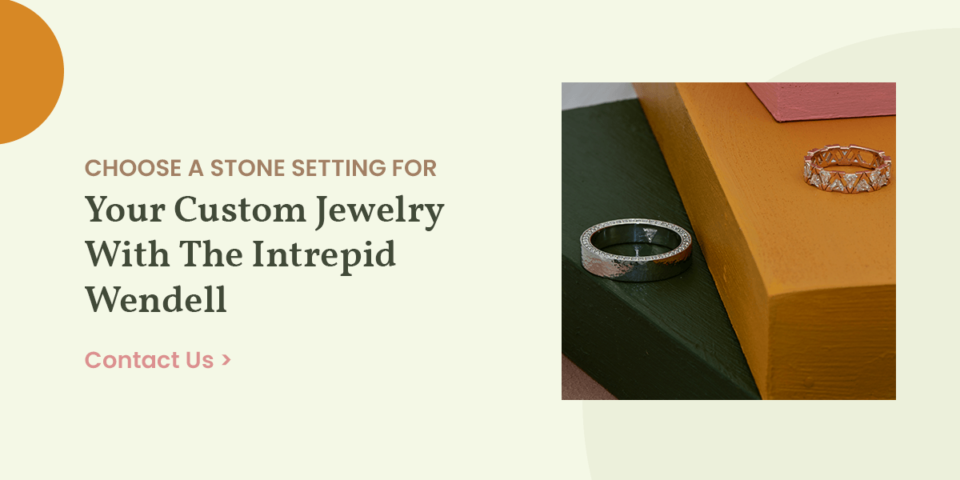Complete Guide to Gemstone Settings
Stone settings determine how the gem is held in place. Jewelry settings matter because they affect the longevity and appearance of your finished piece. A gemstone can be set in place in many ways based on its cut and size and your preferences.
What Is a Stone Setting?
A gemstone setting is the way the gem is secured to the jewelry. Different types of stone settings exist to accommodate factors like the stone’s characteristics, the type of cut, and your lifestyle — like the nature of your job. The setting affects the aesthetic of the finished piece, keeps the gem secure, and protects it from damage.
Ten Types of Stone Settings
The following are some setting options in jewelry design:
1. Prong
Prong setting — also called claw setting — includes three to six thin metal pieces that extend from the jewelry to cradle the gem. This setting showcases the gem’s beauty and allows light to pass through to make the stone sparkle. Prong is common with solitaire engagement rings.
2. Flush
Also called burnish, flush setting embeds the gem into the metal to make the jewelry surface flush with the stone. This setting secures the gems and gives the jewelry a simple, clean look.
3. Tiffany
Tiffany setting is a variation of prong setting that places the gem higher in the prongs. With more space between the stone and jewelry, more light can pass through to make your gem sparkle.
4. Bezel
Bezel setting wraps a metal rim around the gem to enclose its edges. The rim protects the gem’s fine outer edges and secures the stone. Bezel setting is used for delicate stones like turquoise or opal and is common for jewelry for men or anyone with an active lifestyle.
5. Channel
With channel setting, two parallel metal pieces hold a row of gemstones. The gems create a continuous line since no metal is between the stones. Channel setting protects the gems and makes it look like they are floating. This setting is common for rings and bracelets featuring smaller gemstones with an oval, round, square, or baguette cut.
6. Bar
Bar setting is a variation of channel setting — the key difference is that metal pieces between each gem secure the stones instead of parallel walls. This setting makes the finished piece look more extravagant and lets light into the gems’ sides.
7. Pavé
Pavé setting places gems in holes drilled into the jewelry surface, and prongs keep them in place. The gems are often arranged in a honeycomb pattern to give the jewelry a glittering surface and make it appear bigger than its actual size.
8. Tension
Tension setting includes two grooved pieces of metal, and the tension between each grips the gemstone. The gem appears to be floating between the metal pieces. Tension setting is best for oval or round gems with high ratings on the Mohs hardness scale, such as diamonds, sapphires, and rubies.
9. Invisible
Invisible setting is similar to pavé setting, except it does not hold gems with prongs or bezels. The gem’s underside is cut to fit into the jewelry’s metal frame and secured with a locking mechanism. Though this setting is difficult to achieve, it creates an undisturbed coat of gemstones. Invisible setting is best for square or rectangular stones with a princess, emerald, trillion, or baguette cut.
10. Cluster
Cluster setting groups multiple gemstones together. The stone in the center is the statement jewel, and the others complement the design. Cluster setting has many creative possibilities — you can design nearly any pattern or shape. Cluster settings are common for earrings, necklaces, and bracelets, like the tennis bracelet.
Choose a Stone Setting for Your Custom Jewelry With The Intrepid Wendell
The Intrepid Wendell creates bespoke jewelry using the rarest gems in the world and beautiful designs. With our custom design process, you can choose every detail of your jewelry, including the stone setting. Start designing your custom piece — contact us today.

